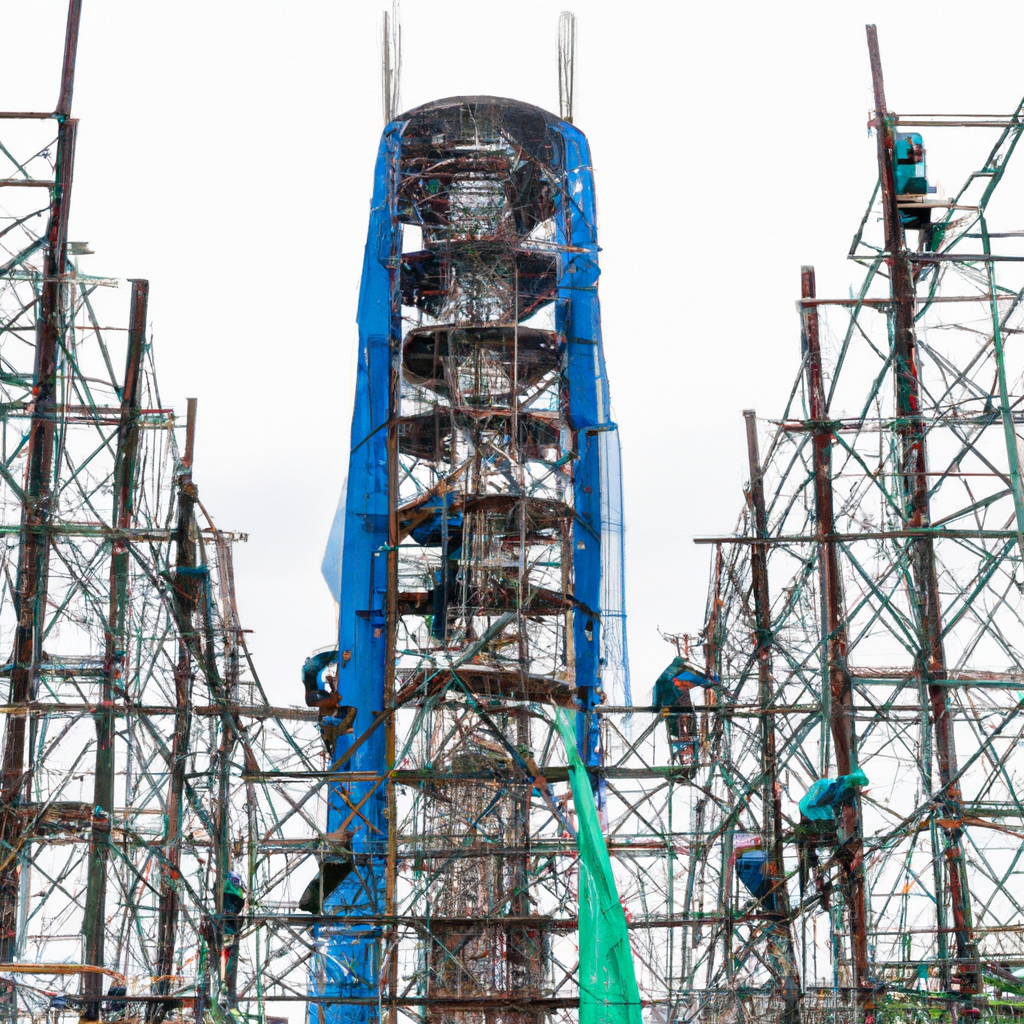In recent years, there has been a growing awareness and concern about the impact of traditional construction practices on the environment. As a result, construction companies are now seeking innovative and sustainable solutions to reduce their carbon footprint. One area that has shown significant potential for eco-friendly transformation is scaffolding. In this article, we will explore the rise of eco-friendly scaffolding solutions and how they are revolutionizing the construction industry.

The Environmental Impact of Traditional Scaffolding
Traditional scaffolding methods have long been a staple in the construction industry. However, these conventional practices are not without their drawbacks. The production and use of steel and aluminum scaffolding contribute to significant carbon emissions. Additionally, the disposal of these materials after use poses a challenge, often leading to waste accumulation in landfills.
Introducing Eco-Friendly Scaffolding Solutions
Eco-friendly scaffolding solutions offer a sustainable alternative to traditional methods. These innovative systems prioritize the use of environmentally friendly materials and aim to minimize waste generation. Let’s take a closer look at some of the eco-friendly scaffolding options that are gaining traction in the industry.
1. Bamboo Scaffolding
Bamboo scaffolding has been used for centuries in various parts of the world, particularly in Asia. This versatile and sustainable material offers several advantages over traditional scaffolding. Bamboo is a renewable resource that grows quickly and requires minimal resources for cultivation. It is also lightweight but strong, making it an ideal choice for construction projects. Furthermore, bamboo scaffolding is biodegradable, reducing waste and environmental impact.
2. Recycled Plastic Scaffolding
Recycled plastic scaffolding is another eco-friendly solution gaining popularity in the construction industry. This type of scaffolding is made from recycled plastic waste, such as bottles and packaging materials. By repurposing these materials, construction companies can reduce their reliance on virgin plastic and contribute to waste reduction efforts. Recycled plastic scaffolding is durable, lightweight, and easy to assemble, making it a practical choice for various construction projects.
3. Composite Scaffolding
Composite scaffolding combines different materials, such as recycled plastics and natural fibers, to create a sustainable alternative. These materials are carefully chosen to maximize strength and durability while minimizing the environmental impact. Composite scaffolding offers a versatile solution that can withstand heavy loads and adverse weather conditions. Additionally, it is lightweight, easy to transport, and requires minimal maintenance.
4. Aluminum Alloy Scaffolding
While aluminum scaffolding falls under the traditional category, advancements in manufacturing techniques have led to the development of eco-friendly aluminum alloy scaffolding. These scaffolding systems are made using recycled aluminum, reducing the need for extracting and processing new raw materials. Aluminum alloy scaffolding offers the same strength and durability as traditional aluminum scaffolding but with a significantly lower environmental impact.
5. Modular Scaffolding Systems
Modular scaffolding systems are designed to be reusable, reducing the need for constant production and disposal. These systems consist of prefabricated components that can be easily assembled and disassembled, allowing for efficient use on multiple construction projects. By promoting reusability, modular scaffolding systems help minimize waste generation and contribute to a more sustainable construction industry.
The Benefits of Eco-Friendly Scaffolding
The adoption of eco-friendly scaffolding solutions brings several benefits to both construction companies and the environment. Let’s explore some of these advantages:
1. Reduced Carbon Footprint
By choosing eco-friendly scaffolding solutions, construction companies can significantly reduce their carbon emissions. The use of renewable and recycled materials, as well as the promotion of waste reduction, helps mitigate the environmental impact of construction projects.
2. Cost Savings
While eco-friendly scaffolding may require an initial investment, the long-term cost savings can be substantial. Reusable and durable scaffolding systems eliminate the need for frequent replacements, reducing operational expenses. Additionally, using sustainable materials can help companies meet green building standards, opening up opportunities for tax incentives and grants.
3. Improved Reputation
In today’s environmentally conscious world, companies that prioritize sustainability often enjoy a positive reputation. By adopting eco-friendly scaffolding practices, construction companies can position themselves as industry leaders in sustainability and attract environmentally conscious clients.
Conclusion
The construction industry is undergoing a remarkable transformation with the rise of eco-friendly scaffolding solutions. Construction companies now have access to a range of sustainable options that prioritize environmentally friendly materials and waste reduction. From bamboo scaffolding to recycled plastic and composite systems, these innovative solutions offer numerous benefits, including reduced carbon emissions, cost savings, and improved reputation. By embracing these eco-friendly scaffolding practices, the construction industry can pave the way for a greener and more sustainable future.


